In order to talk about the Smiths Everest watch, one must introduce three brands, two people and one very significant historical event. The Everest, unlike most homage watches, is an homage in name and form, but to two different brands…as well as to their historical intersection at the highest peak on Earth. You see, in 1953 when Sir Edmund Hillary and Sherpa Tenzing Norgay made their historical climb to the summit of Everest, they had with them two watches: a Smiths and more famously, a Rolex.
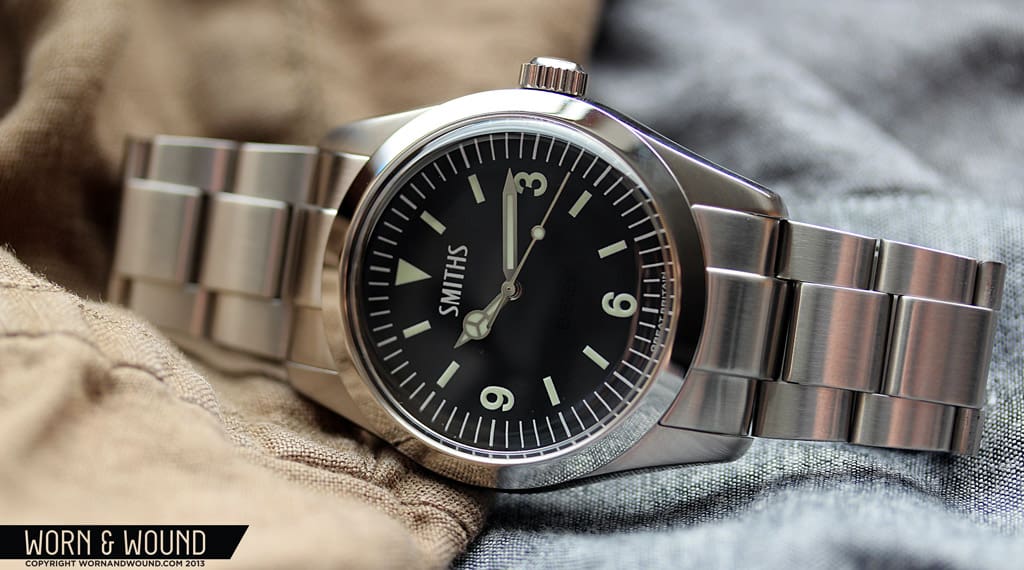 At this point in time, Smiths is clearly the more obscure brand. One of the only English watch brands of the 20th century, Smiths designed and manufactured timepieces, including movements, in the UK from around 1945 to some point in the 70’s. Since the brand dissolved it is no surprise that Rolex has been able to capitalize on this event, making the fact that a Smith’s was on the journey somewhat obscure to the general public.
At this point in time, Smiths is clearly the more obscure brand. One of the only English watch brands of the 20th century, Smiths designed and manufactured timepieces, including movements, in the UK from around 1945 to some point in the 70’s. Since the brand dissolved it is no surprise that Rolex has been able to capitalize on this event, making the fact that a Smith’s was on the journey somewhat obscure to the general public.
These days, the Smiths name has seen a bit of a resurrection, as it is now owned by Timefactors (the third brand in this conversation). Since 1996, Timefactors.com has been manufacturing and selling various re-editions and homages to classic watches, from Omega 300’s to 70’s Hamilton 6BB Pilot Chrono’s to the Blancpain Fifty Fathoms. Their watches have a forum fueled cult following that is easy to understand as the watches are pitch perfect, well made and remarkably affordable.
But back to the watch at hand. The Smiths Everest is in fact made by Timefactors (ref PRS-25), and in name pays homage to the Smiths De Luxe that made the journey with Hillary and Tenzing, but looks like the Rolex Explorer that did too. Just to complicate things more, it is fairly widely agreed upon that the Explorer used did not actually have the iconic 3, 6, 9 explorer dial, but that’s a different article (and one not likely to be on w&w). In the end, you have a watch made by one brand, with the name of another that looks like yet a different watch that pays tribute to one of the greatest moments in human exploration. Got it? Great.
The Smiths Everest itself is then a modern recreation of the iconic Explorer design. Yet, while this watch certainly falls under the homage category, the amount of physical and aesthetic differences between this and the watch from which it draws are great. While wearing and testing the Everest, I found that my enjoyment of the watch went up the less I thought of it as an homage to a specific watch than as just a historically inspired watch that was really its own entity. That being said, no matter how you look at it, the watch is a great value for a Miyota 9015 auto at 235£ (about $350) so let’s take a closer look.
 Case: St Steel
Case: St Steel
Movement: Miyota 9015
Dial: Black
Lume: yes
Lens: Acrylic
Strap: Steel
Water Res.: 100M
Dimensions: 40 x 49.8mm
Thickness: 14.5 mm
Lug Width: 22 mm
Crown: 7 x 3.5 mm
Warranty: Yes
Price: 235£ (about $350, unless VAT is included)
Case
The Everest takes the classic Oyster case design and sort of inflates it to a new more modern size, preserving some of the nicer details of the original. Measuring 40 x 49.8 x 14.5mm with 22mm lugs, the stainless steel case looks and feels sturdy and robust. The shape of the case is very simple from above, with a wide polished bezel and long curving lugs with a light brushing. Turning the watch to the side reveals the complex curvature of the case sides. Perhaps my favorite detail of the Everest as well as Oyster cases, the fluid shape of the case sides is intriguing and elegant. It’s a bit hard to explain the geometry, as the sides look fairly flat, yet have a clear roundness to them, but the end result is a detail that elevates the otherwise simple design, adding a decorative polished surface that has the look of liquid metal.
At 3 is a 7 x 3.5 mm screw down crown that suits the case design well. It’s proportioned nicely to the case and has a simple but elegant design. Unfortunately, it is unsigned, giving it a bit of a generic look, though I am certain it was designed specifically for this watch. Flipping the watch over, you reveal the polished steel screw down case back. There is nothing special going on here, just a few deeply engraved words including the reference number, brand logo and water resistance.
Aside from the curvaceous sides of the watch, other standout features include the high domed acrylic crystal and drilled lugs. These days, I’m always a fan of a well-placed acrylic crystal, and this one is certainly at home. It gives the watch an immediate retro feel, distorting the dial on the edges and from an angle. The drilled lugs are then both a functional and accurate detail, in the sense that they make it very easy to remove any strap or bracelet, and are a feature of the Oyster case design this is based on.
Overall, the case construction is superb and the finishing is better than expected on a watch this price. The look is an interesting mix of the classic design and something new. The larger size takes away some of the nimbleness and elegance of the Oyster design, which was around 35-36mm, but replaces it with a more robust and perhaps aggressive form. In the end, it has a different attitude and feeling that is all its own.
Dial
The iconic Explorer dial dates back to a time when watch design was simpler and perhaps purer. It’s a no fuss layout meant for clarity and legibility that in its lack of extraneous detail and use of the most stripped down fonts and shapes is the definition of balanced. Classic Rolex Explorers, like the ref 6350 and 1016, are and will always be the proto-sport watch and alongside the Submariner, the ultimate gentleman’s watch.
Though it would seem the opposite, recreating something simple is very difficult. Every line and proportion matter more as the slightest miss is magnified. While at a glance the Smiths Everest speaks to the Explorer design, up close there are some differences and it just misses at achieving the balance of the original. That being said, it’s an homage and not a copy, so it’s ok that it reinterpreted the design so long as it still succeeds.
The design of the Everest dial consist of two indexes, the inner hour index and an outer minute/second index. The inner is the “Explorer” index, with a triangle at 12, slender numerals for 3, 6 and 9 and thin rectangles for the other hours. The outer index consists of long thin white lines that get slightly thicker every 5 markers. The thing for me that sort of throws the look is the proportions of the inner to the outer index. The white lines feel very long, almost acting like an internal bezel. This pushes the “Explorer” portion towards the center, giving it a disconnected feeling and a seemingly too small diameter. These white lines do exist on some makes of the Explorer 1016, but they are shorter so the balance is different and makes more sense.
In the end, it feels like the dial is very far from the edge of the case, which is strange. I am being picky, and this certainly might not bother everyone, but it clearly threw me a bit. That being said, once I stopped looking at the watch as an Explorer homage and started thinking about it as a new historically inspired design, I kind of got over it.
Nevertheless, the dial is well executed, with crisp printing and good lume. Text on the dial is very limited, just saying “SMITHS” below 12, “Great Britain” on the bottom edge below 6 and “Everest” just above 6. Everest is printed in an interesting manner, as it is actually gloss black. This makes it stand out ever so slightly against the matter black dial, often disappearing entirely.
The hands on the watch are, not surprisingly, polished steel with a Mercedes hour hand, a fence post style minutes and a lollipop seconds keeping with the Explorer theme. All feature C3 Superluminova and, along with the inner dial, glow quite well. The somewhat strange proportioning I pointed out before is also present in the hands. Since they only extend to the edge of the inner index, they feel short and stubby compared to the overall size of the watch.
Movement: Miyota 9015
One of the best features of the Smiths Everest is hidden within. The Miyota 9015 24-jewel automatic features hand winding, hacking seconds, date (though that is not in use) and a frequency of 28,800 bph. As we’ve stated many time before on this site, it’s a movement we love to see as an affordable alternative to Swiss movements with similar specs. That being said, this is the least expensive we’ve seen one go for, and it really adds value to this watch.
Straps and Wearability
The Smiths Everest comes on a very nicely built steel Oyster style bracelet that is 22mm at the lugs and tapers to 18mm. It’s very thick with nicely machined links that come apart via screws on either side and has solid end links. The top surface of the bracelet is finished with light brushing that blends nicely into the case. There is also a simple signed clasp finishing it off. While it naturally adds a lot of weight to the watch, it’s not uncomfortable once properly sized. Considering the overall price of the watch, it’s a really outstanding addition.
With that said, I actually didn’t love how it looked on the watch itself. It adds an excessive amount of metal to the case, giving the already enlarged design too much mass. This in turn affects the proportions of the dial again, making it feel all the more small and compressed towards the center of the watch. While the bracelet does a good drop of playing off of the more elegant elements of the case, such as the rounded sides, it just didn’t feel right for the watch. Of course, there is a simple solution to this problem, switch the strap.
A rugged, worn-in looking leather strap nicely emphasizes the vintage aesthetic of the case, crystal and dial. Crown & Buckle kindly provided us with a 22mm Shipyard for use on the watch, and it really brought the Everest to life. The strap is a dark oily brown with cream colored stitching and noticeable dermis texture. Put it on the watch and immediately the lugs are accentuated, and the dial looks larger. This helps relieve the strange proportions tremendously and emphasize the natural geometry of the case. It also dresses down the watch a bit, giving more of a casual, sporty look that is seems appropriate for the design and bulky size.
Another viable option, one that is popular on Explorers themselves, is a nylon NATO. On a drab green Maratac, the watch suddenly becomes aggressive and, rightly so, adventurous. The long lugs seem less elegant and more fierce and masculine. The drab green emphasizes the C3 lume on the dial which somehow gives the watch an older more authentically vintage feel.
Regardless of your strap or bracelet choice, the watch has terrific presence. Homage or not, it’s a fun design that feels like it is from a different era of watch design. It’s purposeful, athletic and rugged. And while it doesn’t have the nimble charm of 1016 Explorer, it does have a robust sportiness that beckons to be worn. On the wrist, it simply feels nice. It’s solid and well sized for a modern sport watch, with enough weight to remind you it’s a mechanical, without being uncomfortable. As discussed, different strap choices will give it distinct personalities, but overall I think this watch is best worn as a fun casual watch that has some style to spare. Jeans, work boots, leather strap, cold beer… that’s this watch’s natural environment.
Conclusion
One other thing worth mentioning about the Smiths Everest is that it comes with a great two watch carrying case. It’s a rigid faux-leather box with a soft interior that has two shaped cavities for watches. It’s the kind of thing that usually costs extra, but they throw it in for free. And that leads me to the biggest success of this watch…the sheer value of it. It’s only about $350 before shipping (potentially less if VAT is included in the price), built and finished well, has a great movement inside and it’s packed with features. While I might have not loved the look of the bracelet, of the three options I presented, I am glad that is the one it came with. Leather straps and NATOs are easy and cheap to get, but a bracelet that fits a watch perfectly isn’t.
Value aside, it’s also just a fun watch. Will it satisfy that itch you have for a 1016 Explorer? Not likely, but it is a watch you will enjoy wearing. And the story behind it, honoring the Smiths brand and the Everest expedition, is a fun one to tell. This watch alone pays tribute to a forgotten watch, and while it doesn’t look like it, it is a reminder.
by Zach Weiss









 Featured Videos
Featured Videos




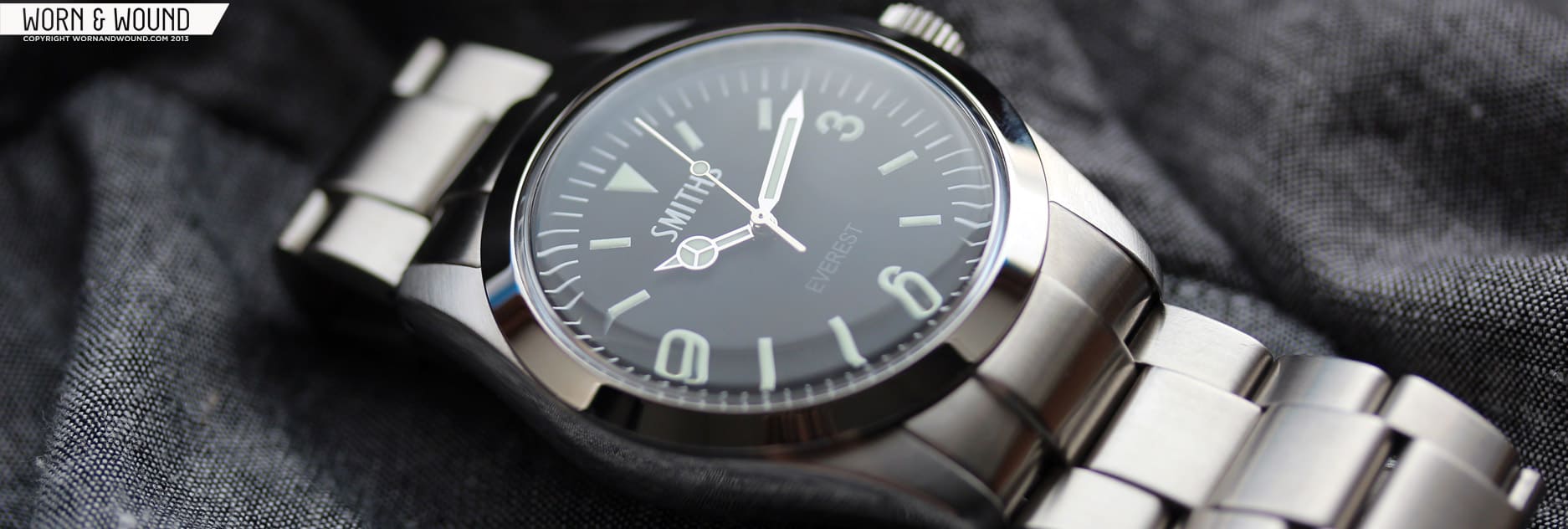
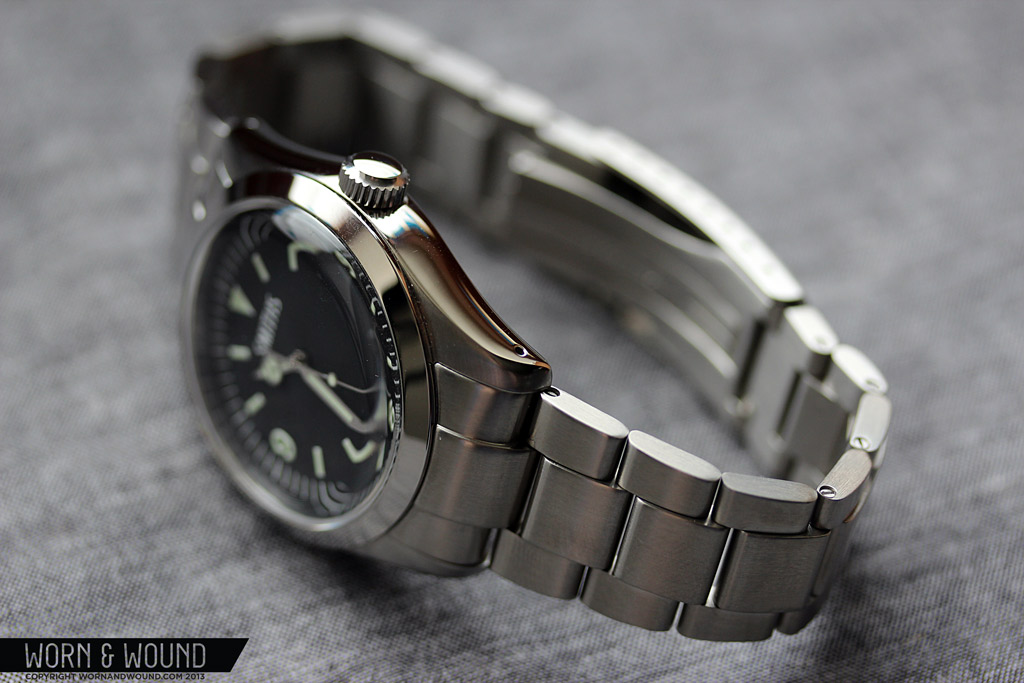
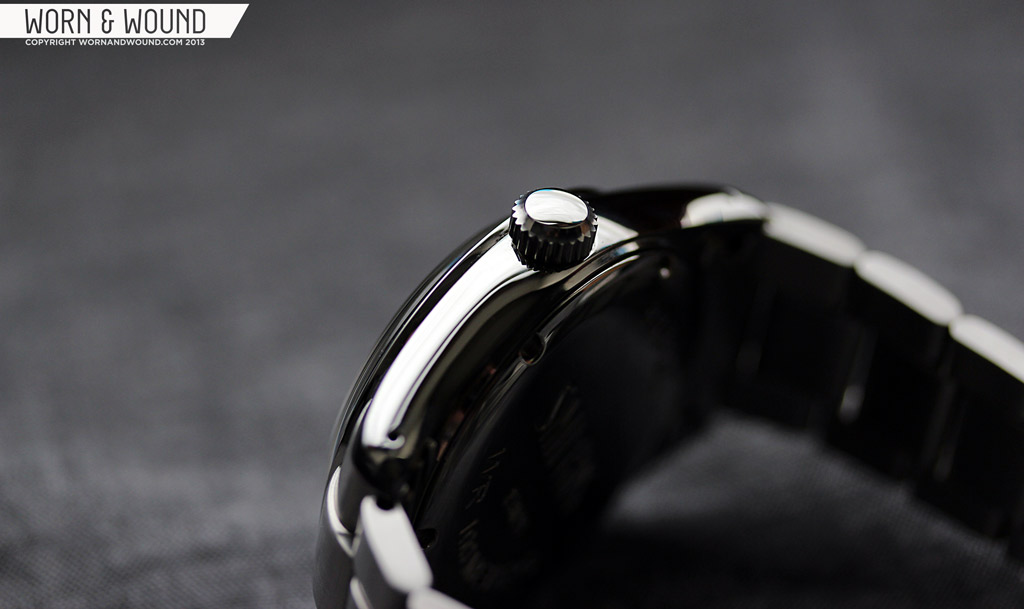
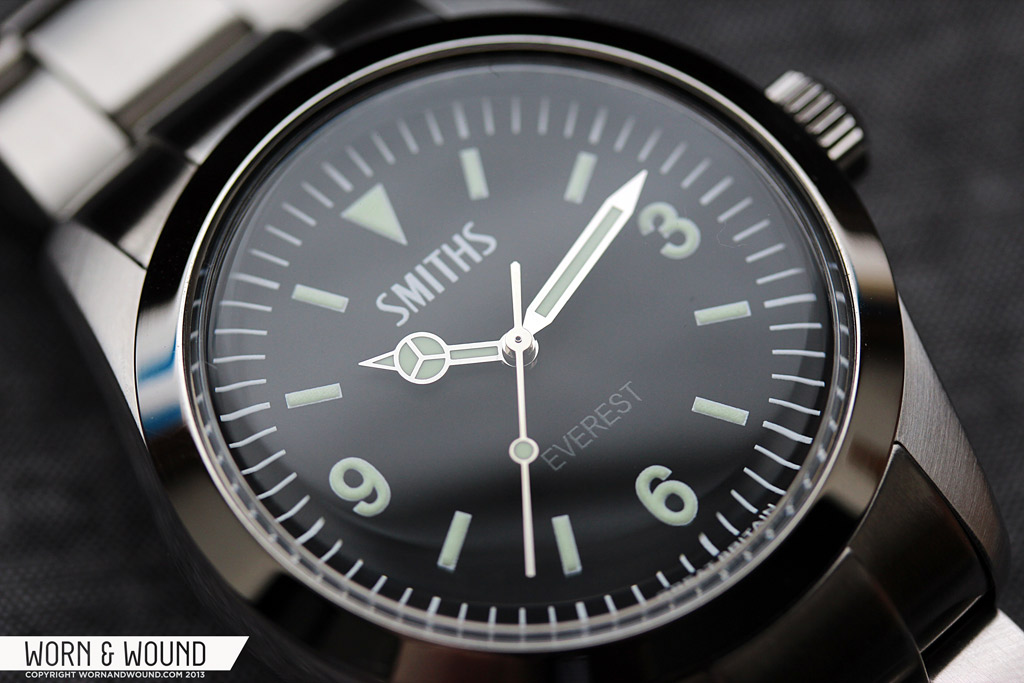
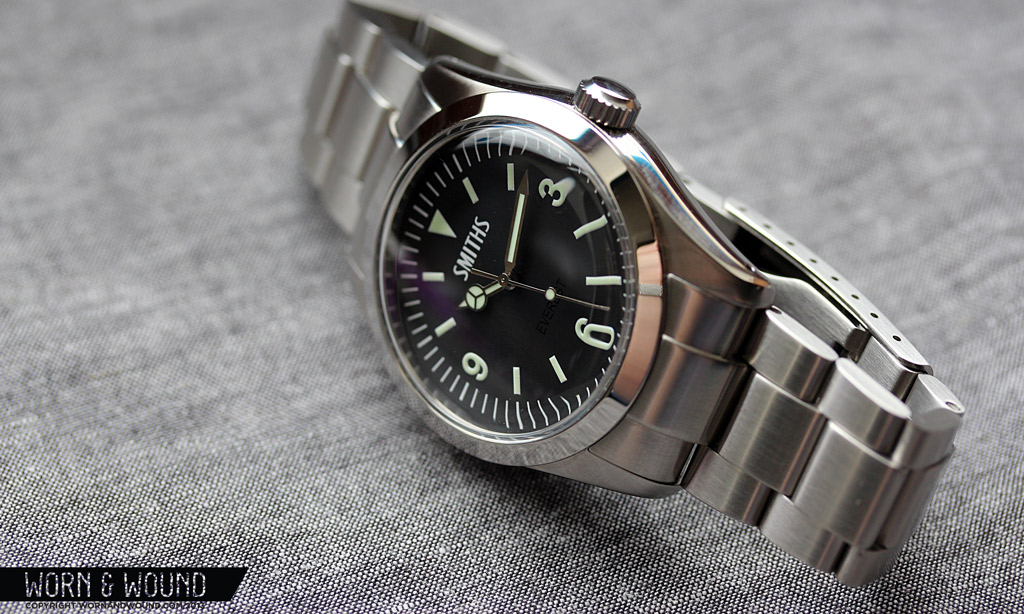
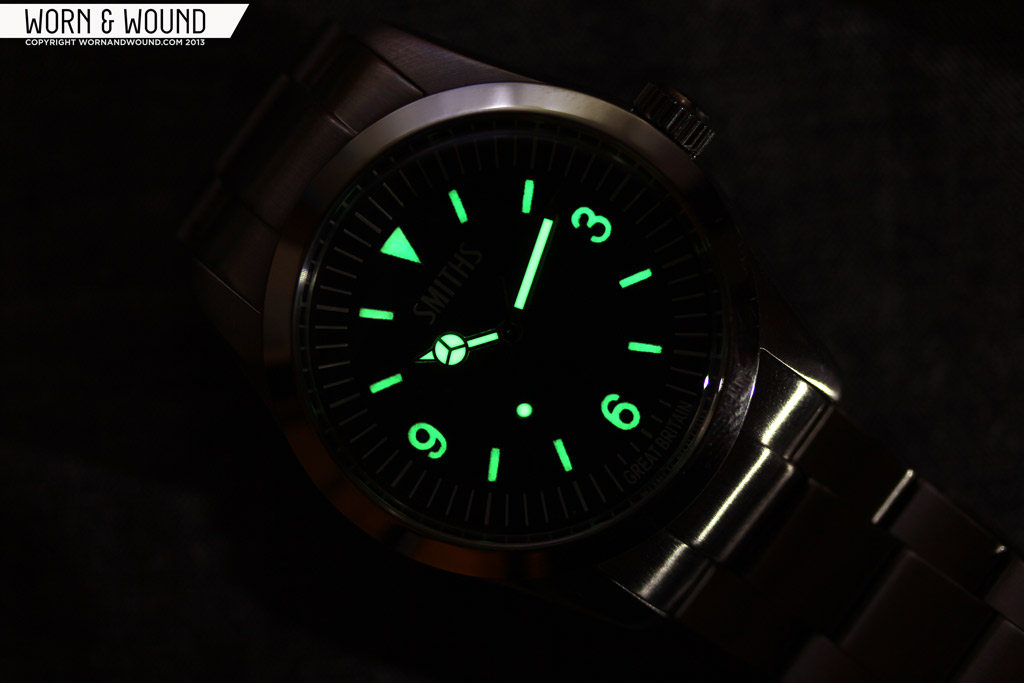
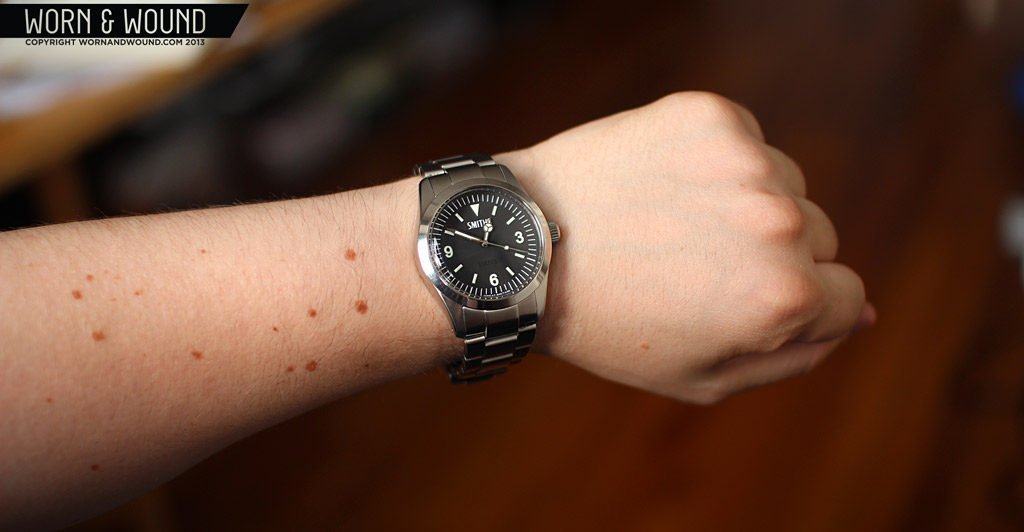
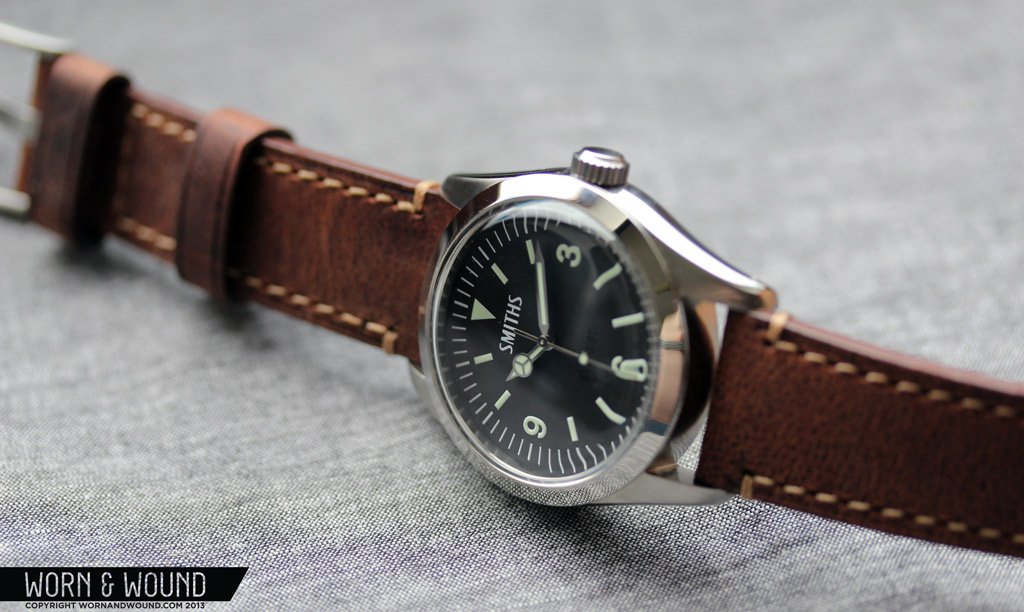
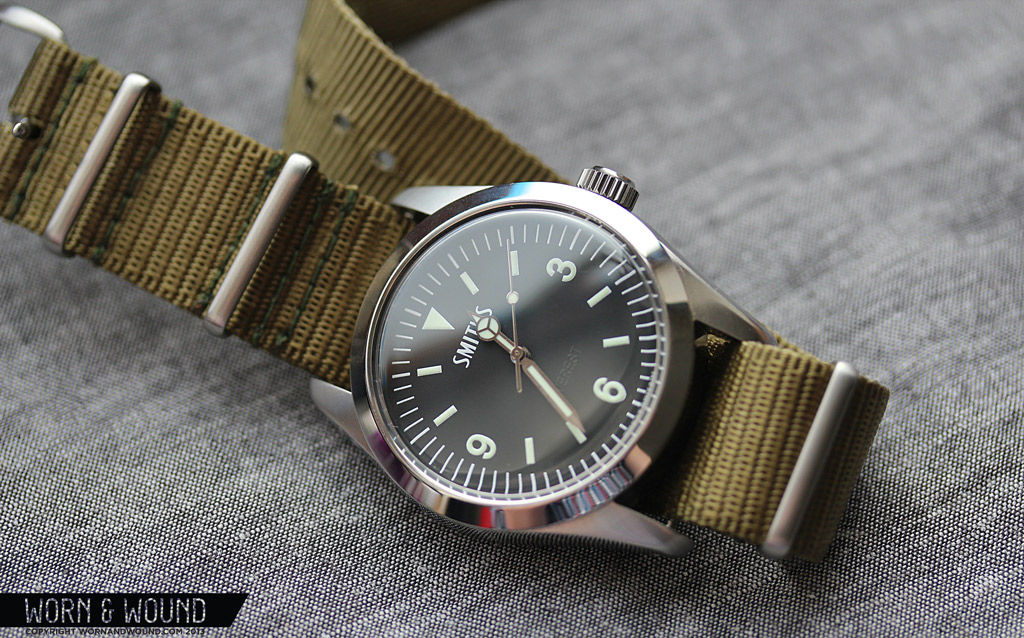
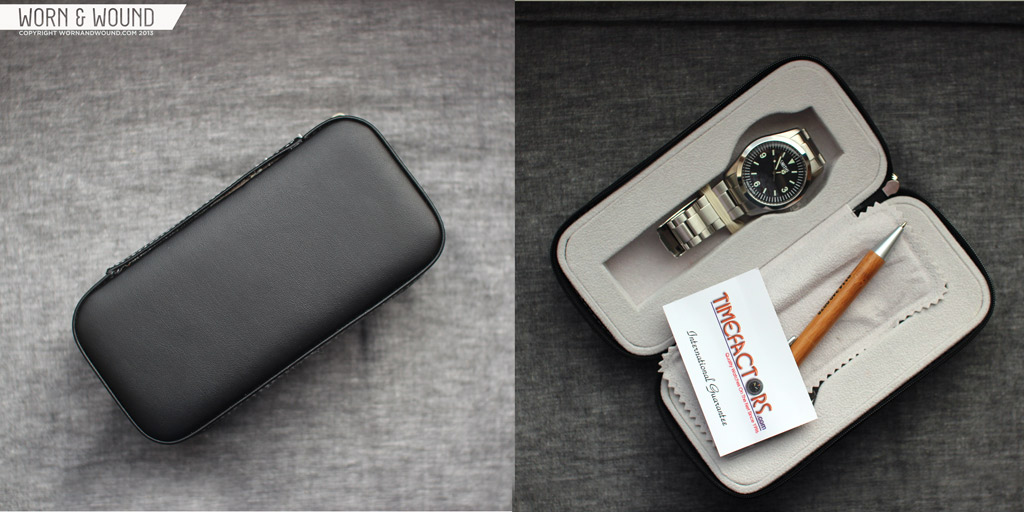
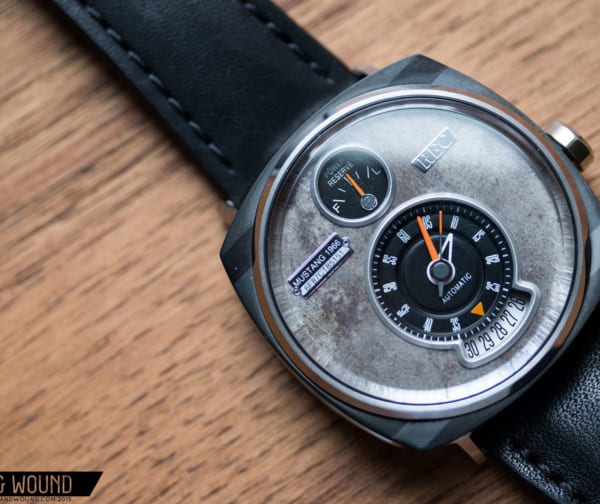
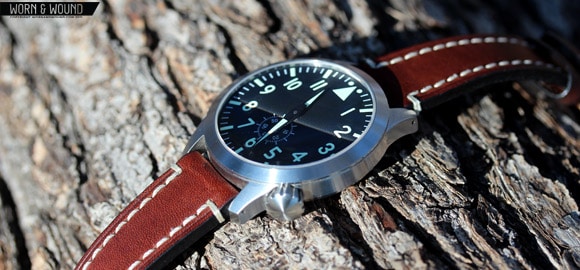

Watch looks too much like the old explorer to get me excited. Much prefer the Hamilton thin-o-matic but that does come with the added mark up.
You are wrong about the price, it would be over $350 USD new from timefactors.
Hi Juanito,
Thanks for the comment. $350 is the price with VAT. Shipping to the US should drop the 19% tax, making it closer to $280
i’m with Juanito on this one .. just checked timefactor’s page and the everest, shipped to the US, is around US$470.00
huh…My apologies. I was misinformed and will update accordingly. Still a fair price for the watch though not as exceptional
Dear Mr. Zack Weiss. Thank you for this article about the Smith Everest watch. I am impressed with your knowledge of the original watches involved. The history of these watches is very fascinating and adds a lot the the enjoyment of any watch Great pictures too. Great analysis of the Smith Everest watch. If all watch reviews could be like yours. Thanks a lot, a real treat for me. Paul Anders
I spent too long contemplating the purchase of a Zeno Explorer years ago. By the time I’d decided that I wanted one, production had long since ceased. When Timefactors announced their Smith’s Explorer, I took a good, long look at it and thought it was a beautifully-made wristwatch for the money. Of course, by then, I had gotten myself an Omega Railmaster. I still visit Timefactors to look at this watch, and I’m still very impressed by it. The potential dealbreaker for me is its 40mm diameter. If it were, say, two mil smaller, I would be all over it.
However, your review has got me thinking about it all over again. Great write-up, Zach, and wonderful photos, once again!
That Zeno was a great watch. I should have jumped up one when they were still around
Owned one, very nice build. Simple and elegant. However, too small on my wrist. Sold it on.
Thanks so much for the great review of a cool watch. I own one and would not give it up. The bracelet is good, but this is the only watch I will wear on a (Bond) NATO. Looks fantastic.
Not bad!
I like the way this review was written. Good context and informative. Confident critical eye. I was able to form my own opinion from the style in which your expressed your opinions. As much as I love this site, sometimes I feel the reviews are too gushing or bordering on apologetic for raising issues. But then again, if you take a look at the body of work here, most of the watches that I handled in person here are pretty damn sweet for the money. Still want to make room in my collection for one of those Lum-Tecs, a Shark Diver and I am strangely drawn to the oversized Benarus.
Every collection should have (just) one over-sized watch. I have 6.5 inch wrists and a Hamilton Khaki Officer’s Mechanical, which measures 44mm. It’s perfect for those days when I want to look like an action figure (batteries not included).
The price on the website is 235 British Pounds (sorry I don’t have the proper symbol on my keyboard).
No VAT is included in that price as far as I know.
Running 235 through the XE currency converter, I get $361.25, still not a bad price for a watch as nice as this.
I have one, and like it a lot. Don’t remember exactly what I paid, but would not have paid $470 for it. (‘Cause I’m cheap.)
This is a fine review, but you really need to get the price right. I think you should contact Mr Platts, verify the correct price and edit your article. Otherwise you’ll have bad info hanging around on your site forever.
Good review but no dice for me. This piece looks too close to the Rolex Explorer and has zero originality. The big, bold text ‘SMITHS’ on the dial makes it worse.
On the other hand, hats off to the Orientstar Classic. An original, classy and very affordable watch.
Read the review and watched the video and went onto Timefactors and got the watch !
Great review Zach you certainly know what you’re talking about and the watch was even better in real life.
The Smiths Deluxe (Everest 1953 model) in the UK is ever more sort after and actually ‘made in England’ and is becoming very desirable with discerning collectors.
For me this watch ticks all the boxes as a modern SMITHS EVEREST. reinvented and attractive and truly could be worn for a climb up Mt Everest !
A collectable of the future………..
Great review. What do you think if it’s on black leather strap probably gives it a less casual look?
I hate to be a downer but who came up with the idea of a rolex homage watch in a historically innaccurate , modern size with defunct english branding and name? As if that weren’t enough the creator decided to mark the dial “great britain” while stuffing the case with a japanese movement? I’m sorry but this just goes too far. It’s like the guy who made this was trying to be as irritating as possible. And i’m hardly a purist. I’m wearing a zeno “explorer” right now. But it is the correct size, it’s called the explorer because that is exactly what it looks like, and it says swiss made on the dial because that is where it was made, including the movement.
And it infringes on Rolex’s trademark, whereas the Everest apparently doesn’t.
I recently bought a Smiths Everest and have it on my wrist now. I like the size of the outer index and wouldn’t have really thought about it until reading this review. However I think they are like this for a good reason. The domed acrylic means that unless you look at the watch absolutely straight on the index nearest you gets foreshortened by the distortion. So if you actually want to see the minute markers all the way around the dial they need to be longer than usual. You can actually see this in some of the photos (including ironically two in the “Dial” section).
Other than that I love the watch. I sold a Rolex at the beginning of the year and have since bought some more reasonably priced watches with the cash raised.These include a Christopher Ward Trident GMT, Steinhart Ocean Vintage Military, Orient Mako and an Orient Star but I keep coming back to the Everest. There’s something about the simple design, legibility and tough looks that is very appealing. I’ve worn it on the original bracelet and various NATOs and it looks great either way.
I can’t agree with Nekromanteion’s comments about the failure of the watch as an homage. To me an homage picks up on certain styling clues from the original but isn’t intended to be a direct copy. For instance Christopher Ward mention the Rolex Submariner as an inspiration for their Trident… but one glance is enough to see that it’s different in many ways. Watch sizes have generally grown and 40mm now is pretty average and fits my 7.5″ wrists well. In fact the Rolex Explorer I has itself grown from 36mm to its present 39mm.
If it was merely the size I wouldn’t really have a problem with it. It is a combination of the size, the ridiculous branding and title of the watch, the unscrupulous “Great Britain” marking on the dial, and the japanese movement, to say nothing of the hands, crystal, dial, case and bracelet, few of which, if any, were probably made in England.
As an aside, I think Rolex will some day regret caving in to create so many “gangster rapper” size watches. That fashion trend already peaked and it is beginning to decline.
Thanks Zach and Mark, you’ve helped me decide to buy this watch to replace a lost Rolex which I simply cannot afford to replace nowadays. To appease my sorrow I’ve bought a few nice Kinetic Seikos which I really like but they don’t quite fill that gap. I’ve even stupidly delved into trying to get a replica Rolex. I think the Smiths Explorer pays just enough homage to assuage my remorse and it seems to be a watch of a quality that will stand the test of time and might deserve a little respect in its own right. I’ll enjoy watching that high beat sweep of the second hand the quality and like of which I can only enjoy on my 1950s CYMA that my dear old dad left me.
A homage is a copy in my book. Yes, Smiths went up to the top of Everest w/ Rolex but w/ a DeLuxe, which looks nothing like this watch. So, Timefactors bought the Smiths name and decided to defile its legacy by making a smash-up copy between the 1016 and the new 39mm Explorer. This watch insults Rolex, Smith’s legacy and the people of “Great Britian”. There are so many better, original watches in this price point. Why buy something like this? Sayōnara, Timefactors.
I checked out Timefactor’s website. The watches look nice enough for what they are (I actually really like the Everest reviewed here) but my God do they have to hire a web developer. Their website is painful to use. The website is linked to in this article.
I’d recently decided to buy my first mechanical watch and stumbled across Smiths. As a frequent reader of your reviews I was sold and will be placing an order. Thank you for giving me the confidence to buy. Can’t wait for it to arrive!
I’ve got one of these and it gets a lot of wrist time. It’s a great watch, rugged (although not to Elliott Brown standards) and the acrylic domed crystal is a stroke of absolute genius. I don’t use the bracelet – I tend to wear it on a leather NATO from Christopher Ward